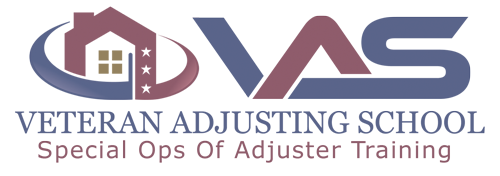INSURANCE ADJUSTER TRAINING
Thinking about becoming an insurance adjuster? The demand for insurance adjusters is high, and growing every day. Job security in the adjusting field seems very steady as storms, and other unfortunate weather events are on the rise.
So, you’re thinking that this might be the right career for you, and now you need to find training. But, where can you find quality adjuster training that will guarantee that you can find work, get a license, and be fully prepared when it’s time to calculate your estimations?
VAS Insurance Adjuster Training Program has a 100% graduation rate and a 96% job placement rate. Why does the 6 week VAS course curriculum have such great success? Two reasons: 1)Students are interviewed to make sure that they are a right fit for the job. 2)Because VAS has a reputation for turning out quality adjusters and they have partnered with 15 different insurance companies to employ graduates.
Why are VAS Students Better Prepared?
VAS has a complete 6-week program that includes real-world simulations, mentoring, industry tools, software training, and full preparation for catastrophe or day claims insurance adjusting in the field. VAS mentors guide students through the licensing process.
Not only are VAS graduates better prepared when they go in the field, but they also have the assistance of a mentor to talk them through their first in-the-field experience. Graduates of the program like having the comfort of an expert to help them gain confidence through their initial estimations.
The classes from VAS are presented in the form of:
– Interactive Lectures
– Audio & Visual Aids
– Field Assignments
– Student Participation
– Problem Solving
– Demonstrations
– Labs
– Homework
VAS is licensed by the Arizona State Board for Private Postsecondary Education as Vocational School #V1531, and approved by the U.S. Department of Veteran Affairs for Veteran’s Educational Benefits.
How Do I Start?
Whether you want to work day claims or catastrophe insurance, click the button below to contact one of our mentors.

